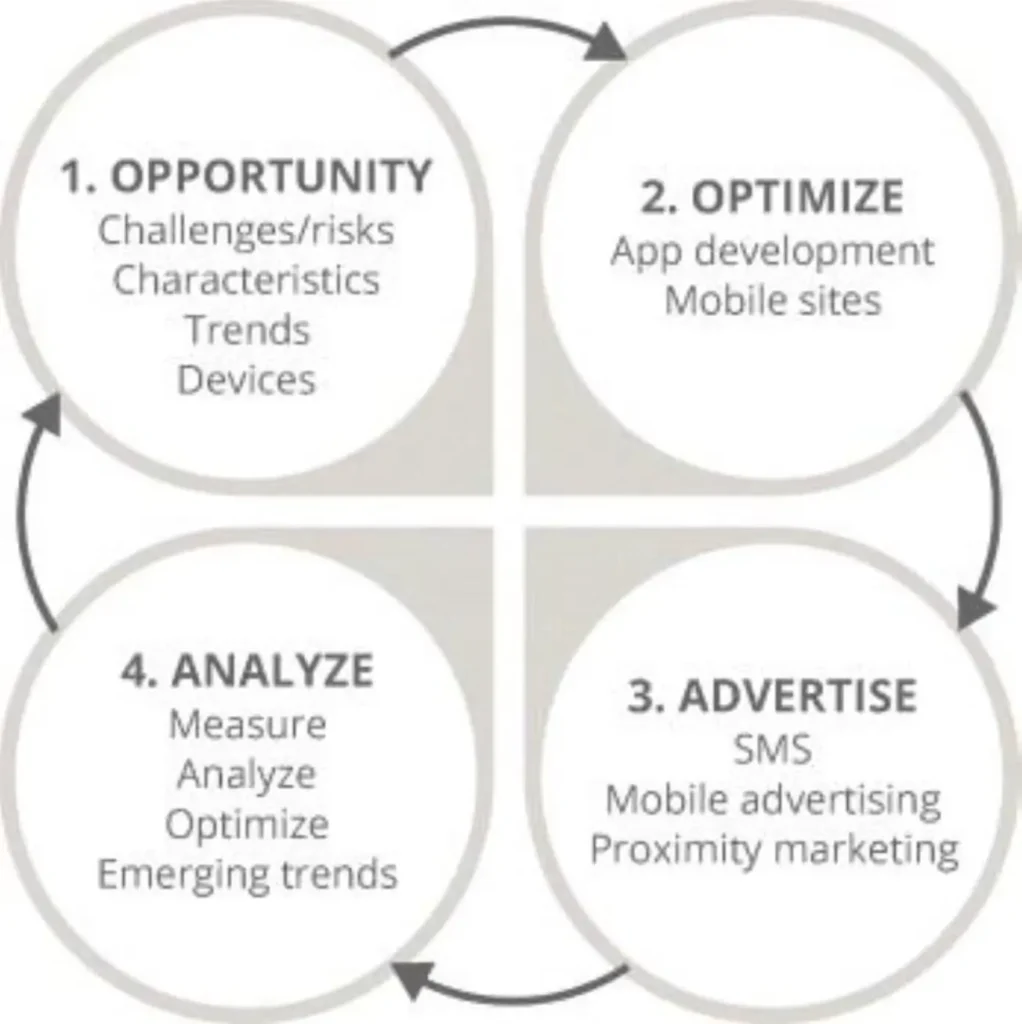People have grown pretty fond of their phones. Their little devices of metal, plastic, and glass are like phantom limbs and they panic if they forget it. Even for a few hours. This addiction means that consumers have become used to having their mobile devices with them constantly. So what opportunity does this pose for marketers?
Effective mobile marketing is a cycle of discovery. Since it is a relatively new channel, there is no real rule book to follow—so you will need to experiment with and augment your strategy as you go along.
Let’s address the four main stages of mobile marketing’s iterative process:

Opportunity
Opportunity. Chapter 8 begins by discussing how mobile use has taken off and why this presents such a great opportunity for digital marketers. You will come to understand the sheer size and scale of the mobile marketing universe and why an ever-increasing amount of attention is being paid to it. Once you have seen what makes mobile such a big deal, you will discover a few challenges that it may throw your way.
Optimize
Optimize. This stage will explain the ups and downs of mobile sites and apps. It will include considerations for devising your mobile strategy and show you how to create a mobile-optimized website. You will learn about app development too—the types of apps that you can create for various platforms, how you go about creating an app, and the benefits of building an app versus a mobile site.
Advertise
Advertise. Mobile advertising has exploded faster than a pack of Mentos in a Diet Coke. In this stage, you will learn the many new ways in which you can reach customers on their precious devices.
Analyze
Analyze. As with all advertising campaigns, you should use analytics to track the success of yours before optimizing them for top results. The final stage will cover how to do so from a mobile marketing perspective, because one of the great things about mobile marketing is that it is immensely measurable.
Reference:
Dodson, I. (2016). The Art of Digital Marketing. Wiley.
